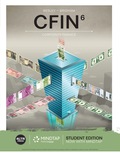
Concept explainers
Exercise 25-6 Sales mix determination and analysis P3
Colt Company owns a machine that can produce two specialized products. Production time for Product TLX is two units per hour and for Product MTV is five units per hour. The machine's capacity is 2,750 hours per year. Both products are sold to a single customer who has agreed to buy all of the company's output up to a maximum of 4,700 units of Product TLX and 2,500 units of Product MTV. Selling prices and variable costs per unit to produce the products follow. Determine (1) the company's most profitable sales mix and (2) the contribution margin that results from that sales mix.
$ Per unit
product TLX
Product MTV
Selling price per unit.......................... $15.00 $9.50
Variable costs per unit......................... 4.80 5.50
Check (2) $55,940
Want to see the full answer?
Check out a sample textbook solution
Chapter 25 Solutions
FUND.ACCT.PRIN.(LL)-W/ACCESS >CUSTOM<
- Please provide the accurate answer to this general accounting problem using appropriate methods.arrow_forwardPlease provide the accurate answer to this general accounting problem using appropriate methods.arrow_forwardI need help with this general accounting question using standard accounting techniques.arrow_forward
- Can you help me solve this general accounting question using valid accounting techniques?arrow_forwardCan you solve this general accounting question with accurate accounting calculations?arrow_forwardI am looking for the correct answer to this general accounting problem using valid accounting standards.arrow_forward
- I am searching for the accurate solution to this general accounting problem with the right approach.arrow_forwardCan you solve this general accounting problem with appropriate steps and explanations?arrow_forwardPlease explain the solution to this general accounting problem using the correct accounting principles.arrow_forward
